
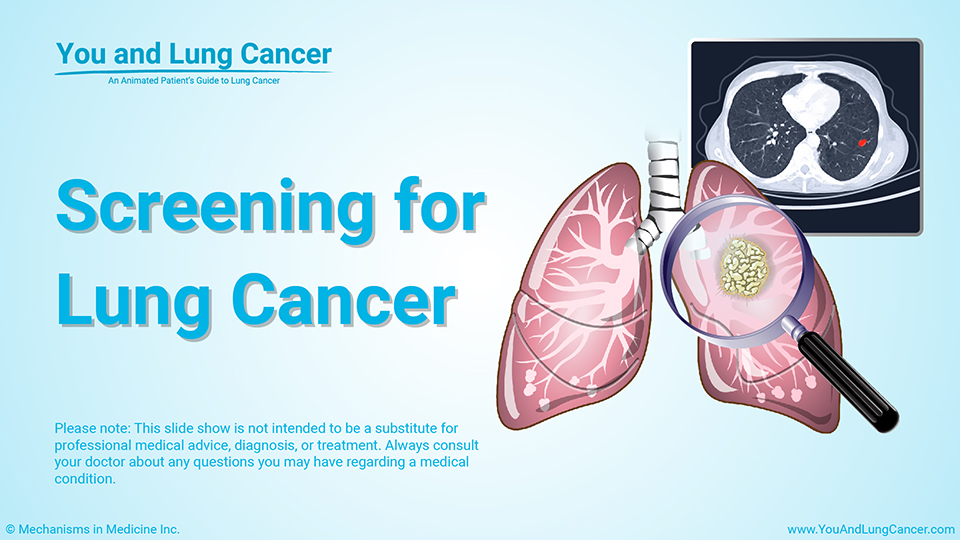


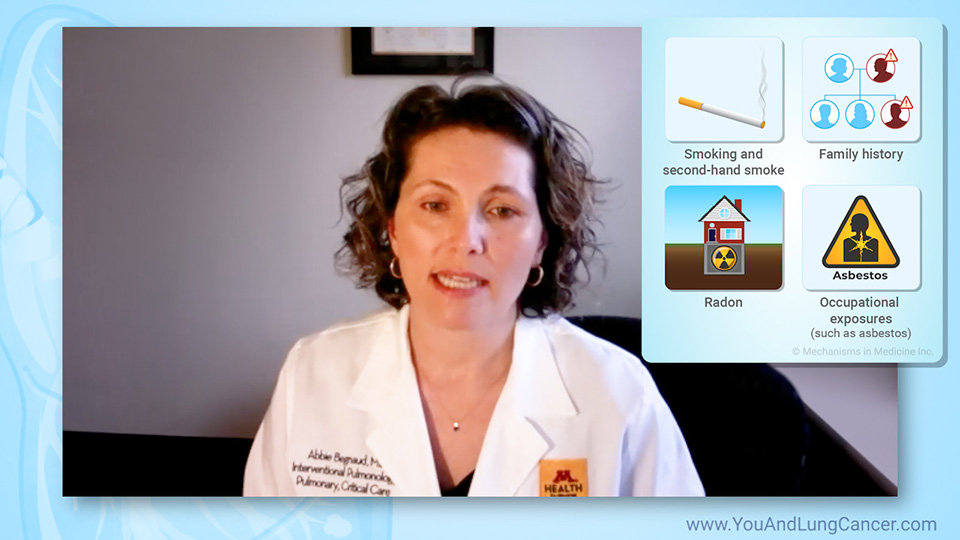
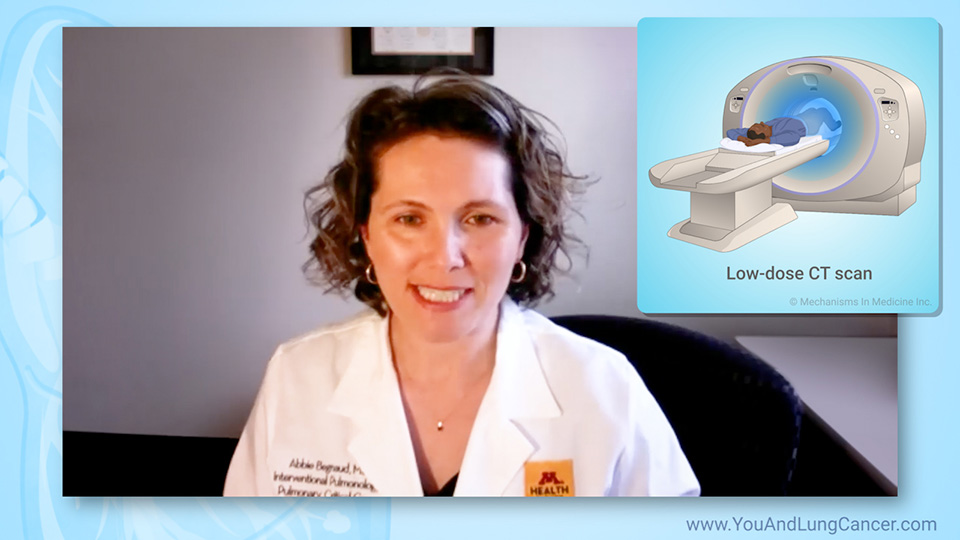

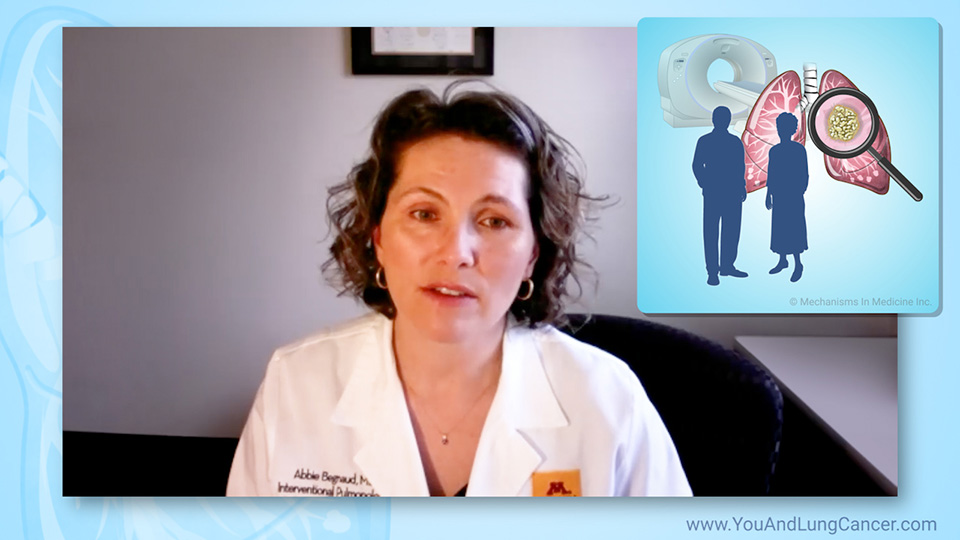
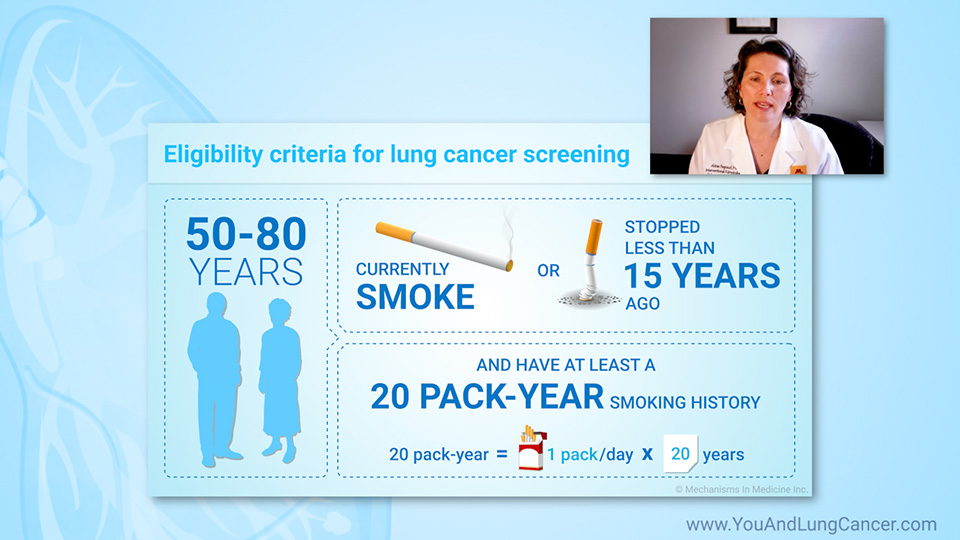

Slide Show - Screening for Lung Cancer
Click here to take our SURVEY
Your feedback is important to us! We will use your feedback to develop future areas of content about lung cancer which will help other patients, caregivers and families.




















*Please note: This slide show is not intended to be a substitute for professional medical advice, diagnosis, or treatment. Always consult your doctor about any questions you may have regarding a medical condition.
Lung cancer is the second most common cancer in the United States. It is most common in adults over 65,1 but younger people can also get it.
Lung cancer is the leading cause of cancer death worldwide.2 This is partly because it may not cause symptoms or symptoms are missed until it is advanced.3 When diagnosed late, it can be hard to treat successfully. Finding lung cancer early can lead to better outcomes.4,5
Screening means looking for disease in people without any symptoms. There are standard screening tests for some cancers such as mammograms for breast cancer and colonoscopies for colorectal cancer.
However, so far lung cancer screening is only available for people at high risk who meet certain screening eligibility criteria.6
An imaging test called low-dose computed tomography, or LDCT, is the main recommended screening test for lung cancer. It uses a small amount of radiation – much less than a regular CT scan. A low-dose CT scan is more likely to show tumors than routine chest X-rays.7
Low-dose CT can help your doctor see changes or "spots" on the lungs that could be a sign of cancer.8
The US Centers for Disease Control, US Preventive Services Task Force and other organizations recommend annual lung cancer screening for people aged 50 to 80 who currently smoke, or who stopped less than 15 years ago and have at least a 20 pack-year history. 20 pack-years means smoking one pack a day for the last 20 years or two packs a day for the last 10 years.9
Yearly screening is best for people who are healthy enough to have surgery and other treatments if cancer is found. If you have other serious health conditions, your doctor may not recommend annual lung cancer screening.10
Screening is not currently available for people who only smoke occasionally, smoke marijuana, or vape.
Ask your doctor if you are not sure.
Researchers have studied the safety of low-dose CT for more than 20 years. The results show that screening as recommended (for people who are eligible to be screened) is a low-risk and safe way to prevent many deaths from lung cancer.11
Unfortunately, fewer than 6 in every 100 eligible Americans overall receive low-dose CT lung cancer screening. In some states, the screening rate among those who are eligible to receive annual low-dose CT scans is as low as just 1 in 100. If you are eligible, ask your doctor about screening. It could save your life.12
It is important to be screened at a center that has experienced specialists and the right equipment for low-dose CT. Medicare or private insurance require screening at an approved center.
The American College of Radiology has a website tool you can use to find a center.
Low-dose CT can be very helpful, but it does have some risks.
Low-dose CT is currently the safest and most reliable lung cancer screening option.
X-rays were used in the past, but they are not as sensitive as low-dose CT for screening. They also do not show lung changes reliably enough to save lives.
Based on new research, blood tests may be an option to screen for a type of lung cancer called small cell lung cancer (SCLC). This lung cancer is too fast-growing to be caught early by low-dose CT. Just 15% of lung cancers are SCLC, but it is often fatal because it is hard to find until it is quite advanced.
If you smoke, the best way to lower your risk of lung cancer death is to stop smoking. Screening is not a substitute for preventing cancer.
Many new medications exist to help you stop smoking. Talk with your doctor about getting help if you still smoke.
Smoking is not the only risk factor for lung cancer. Lung cancer is also caused by second-hand smoke, radon, occupational exposures such as asbestos, and family history. Talk with your doctor if you have other risk factors.
Your doctor may recommend lung cancer screening for you. However, you may also want to ask about screening, especially if you are a woman or of Black, Hispanic, American Indian or Pacific Island heritage.12 Asking can help you receive the screening and treatment you need to stay as healthy as possible.
References
Click here to take our SURVEY
Your feedback is important to us! We will use your feedback to develop future areas of content about lung cancer which will help other patients, caregivers and families.










This educational activity has been developed by A Breath of Hope Lung Foundation and Mechanisms in Medicine Inc.
This activity is supported by educational grants from AstraZeneca Pharmaceuticals, Bristol-Myers Squibb Foundation Inc., Bristol-Myers Squibb Grants and Giving, Foundation Medicine, Genentech, Jazz Pharmaceuticals, Merck Sharp & Dohme LLC, Neogenomics, Novartis, Pfizer, and Takeda Oncology.
This website is part of the Animated Patient® series developed by Mechanisms in Medicine Inc., to provide highly visual formats of learning for patients to improve their understanding, make informed shared decisions, and partner with their healthcare professionals for optimal outcomes.